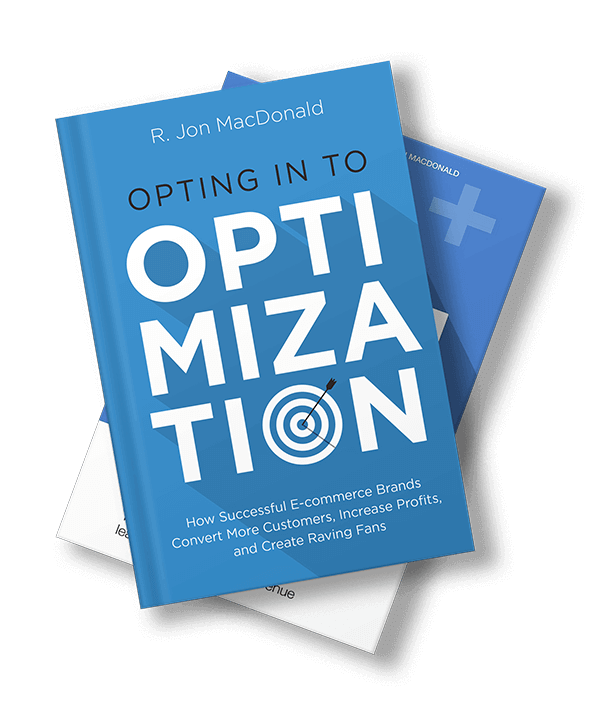
What Makes a Good Optimization Team Lead?
The right optimization team lead should possess certain traits to successfully drive results and foster a culture of innovation and collaboration.
Selecting the right optimization team lead can make or break your digital experience. The optimization lead is the linchpin in advocating on behalf of the customer, improving user experience, and ultimately boosting revenue.
Whether you are promoting in-house, looking at external candidates, or wondering about outsourcing to a firm, here are the best (and worst) signs of a successful optimization team lead.
The ideal optimization team lead
I’ll preface by saying something obvious: every skill set can be a strength in one scenario and a weakness in another. Keeping aesthetics as the north star may make an excellent designer or marketing leader, while it could be completely detrimental for an SEO specialist.
Similarly, what makes a great optimization team lead may not make a great HR manager or sales executive. When deciding who should head up your optimization program, the goal is to focus on the strengths and pitfalls of project sponsors, specifically.
In our experience, the best optimization team leads have a blend of skills that set them apart:
- Experimental mindset: Openness to incremental gains and willingness to take calculated risks for substantial growth.
- Eye for design: Ability to provide valuable feedback and advocate for brand standards without getting bogged down in nitpicky details.
- Customer-centric: Eagerness to understand and cater to the needs of customers, driving long-term success.
- High-risk tolerance: Pushes the boundaries and doesn’t follow all of the rules. Likes to see things shaken up and changed and is willing to take risks to see gains.
- Authority: Has a level of trust and authority from higher-ups and team members at the organization. Doesn’t rule by committee but rather can take feedback and make decisions.
- Collaborative: Good cross-team knowledge. Understands the design queue, the dev queue, etc., and can help manage or prioritize projects. Can motivate other teams to get people on board and know how to delegate or find contributors when necessary.
- Business acumen: Capacity to align optimization efforts with overarching goals and adapt priorities dynamically.
- Effective communication: Ensures alignment within the team and keeps stakeholders informed and engaged. They are timely and get the information to the people who need it.
A program leader orchestrates efforts, balances priorities, and drives results. They are the glue connecting various stakeholders, from designers to developers to CMOs.
Many roles that may appear to be the obvious choice for the optimization team lead struggle when it comes to making the switch. If you are leaning towards a designer, dev, or CMO/CEO to lead your optimization program, each has a unique set of predictable strengths and weaknesses.
Let’s take a look at their strengths and pitfalls, and I encourage you to keep these in mind as you decide who is going to head up your experimentation efforts.
What to consider when entertaining a designer as an optimization team lead
Designers bring a keen eye for aesthetics and user experience to the table. However, some nuances make it difficult for a designer-turned-lead to succeed in optimization program management.
Best brand advocates: Designers are some of the best brand advocates. They understand the importance of keeping your digital experience cohesive.
Understand design impact: They also know first-hand the profound impact design can have on revenue goals, so they’re likely to champion changes while creating a sleek and beautiful digital experience.
Open to big changes: Designers are often more open than other team members to big changes. They see high-leverage opportunities and are always looking for the best iteration of website or app elements.
Designers can get hung up on minutia and cost time in favor of fidelity
Designers leading an optimization program risk prioritizing fidelity over speed, allowing perfectionism to bog them down.
Apprehension toward mid-fidelity: There is an element of experimentation that requires shipping ideas for initial feedback before they are completely buttoned up. Mid-fidelity prototypes can be an incredible resource for learning about your audience and validating website or app changes, and designers are often hesitant to leverage the tool.
Difficulty prioritizing usability: They can prioritize branding over usability and the user experience, giving more weight to aesthetics when one of the most important pieces of an optimization puzzle is staying user-centered.
All of this culminates, and we often see designers forgetting the forest for the trees, overlooking the bigger picture, and getting bogged down in the details. Also known as “bikeshedding” this can present as a bias towards focusing on minor issues and neglecting important issues.
How to prepare designers for the role of optimization lead
For designers to be in the lead, they need to remember that optimization is about testing in sometimes less-than-perfect fidelity to get proof of concept. Once they are bought into the quick-and-dirty nature of rapid prototyping and have gotten over the expectation that everything should be pixel-perfect before it’s shared, they’ll make a great team lead.
What developers bring to the optimization lead role
Developers are the backbone of technical implementation, but their leadership capabilities vary. Generally, we are of the opinion that it is crucial to involve devs in the optimization program, but the skills that make a great developer can limit the capabilities of an optimization program.
Efficiency aficionados: Devs are great at finding efficiencies and keeping your digital product up and running. They know production schedules which prevents optimization efforts from breaking parts of the digital experience, and they can help coordinate the timing of changes.
Expand testing capabilities: They often also expand the capabilities of the testing portion of an optimization program specifically because they can quickly do things like:
- Troubleshoot
- Implement new pages for a split test
- Add a product tag for testing
Understand development schedule: Developers have intimate knowledge of the product schedule and technical constraints of their platform. While this allows for seamless coordination within regular sprint schedules, it can impart unnecessary limitations onto optimization teams.
Developers can advocate for the “fastest way to execution” too readily
Prioritize efficiency over innovation: In general, developers are too focused on current capabilities. Their superpower is that they look for the most efficient way to solve a problem, not what is going to look and perform the best. This leads to missed opportunities for innovation.
Quick to ship: Devs are also measured based on how much they ship, so the test-and-learn approach is not second nature to them. They might see a test in the queue that they know they can ship easily and jump to make it happen quickly rather than waiting for measurement and feedback.

How developers can succeed as optimization leaders
Developers who head up optimization teams can succeed by understanding and aligning with the goals of optimization.
Careful optimization saves development time. It mitigates the risk of launching treatments that negatively impact user goals and revenue. So developers should learn to see optimization as a tool for efficiency rather than an unnecessary additional step.
What to think about when considering CMOs and CEOs as optimization team leads
High-ranking executives bring authority and strategic vision to the table but may face challenges in grasping the nuances of optimization.
Authority over resources: One of the most incredible powers of CMOs or CEOs is their authority and control. They can facilitate resource allocation and prioritization, making quick decisions without needing the approval of someone who isn’t in the room.
This leads to faster execution and more impactful optimization practices. If the CEO or CMO is bought into the power of experimentation, you are much more likely to see improvements to your digital experience.
Delegation experts: Executives skillfully delegate tasks, ensuring everyone works efficiently toward the same goal. They keep things organized and aligned toward overarching company goals.
Be wary of CMOs and CEOs as team leads when time is a precious resource
All of that being said, CMOs or CEOs are better off supporting an optimization program than leading it.
Distracted by other priorities: C-suites have heavy workloads. This makes it easy for them to prioritize new strategic projects over the digital customer experience. We’ve seen it time and time again: C-suites initially embrace the big-picture thinking of an optimization process. However, their enthusiasm wanes when it’s time to provide tactical support.
How to succeed as a C-suite in an optimization role
The best way to head up an optimization practice is to elevate and delegate. Stay aware of bigger-picture activities, but be honest with how much time you can commit. Either set aside a few hours a week to align with your team and progress the optimization program, or delegate day-to-day project communications to someone you trust.
Keeping stakeholders aligned: Who else should be involved?
It’s important to keep in mind that while certain roles will face unique challenges as an optimization team lead, there are plenty of disciplines that can (and should) be involved in the experimentation program. After all, you can have a stake in optimization without leading the project.
An optimization program includes a review of your entire website or digital experience. This helps you identify the key team members who should contribute to the process. Providing the right support helps align everyone on optimization priorities and expose any testing constraints and requirements.
Here are some key team members to keep involved in the project:
- Stakeholders who know the template, designs, and upcoming changes for your website or digital product. This could include ecommerce, marketing manager, or product managers. They should have the resources to share relevant details to keep in mind as your optimization program or testing begins.
- Stakeholders who manage the website properties, know historical content, and/or make decisions behind the scenes. This could include the CEO, developers, or product designers.
- Any stakeholders who can speak to KPIs that they want to address with the optimization program.
Involving the right team members contributes valuable insights and expertise, ensuring a holistic optimization approach.
A great optimization team lead improves your digital experience
Finding an exceptional optimization team lead isn’t just about skills. It’s about identifying the person with the right blend of skills, traits, and attitudes to align with the organization’s goals and values.
When businesses prioritize qualities like design acumen, experimental mindset, customer focus, and business savvy, they cultivate leaders. These leaders drive results and foster a culture of innovation and collaboration.
Enjoying this article?
Subscribe to our newsletter, Good Question, to get insights like this sent straight to your inbox every week.

About the Author
Juliana Chapin
Juliana Chapin is the Project Coordinator at The Good. She adeptly manages internal workflows with a keen focus on seamless cross-team collaboration, ensuring customer satisfaction and success.